Intel Rocket Lake (14nm) Review: Core i9-11900K, Core i7-11700K, and Core i5-11600K
by Dr. Ian Cutress on March 30, 2021 10:03 AM EST- Posted in
- CPUs
- Intel
- LGA1200
- 11th Gen
- Rocket Lake
- Z590
- B560
- Core i9-11900K
Gaming Tests: Final Fantasy XV
Upon arriving to PC, Final Fantasy XV: Windows Edition was given a graphical overhaul as it was ported over from console. As a fantasy RPG with a long history, the fruits of Square-Enix’s successful partnership with NVIDIA are on display. The game uses the internal Luminous Engine, and as with other Final Fantasy games, pushes the imagination of what we can do with the hardware underneath us. To that end, FFXV was one of the first games to promote the use of ‘video game landscape photography’, due in part to the extensive detail even at long range but also with the integration of NVIDIA’s Ansel software, that allowed for super-resolution imagery and post-processing effects to be applied.
In preparation for the launch of the game, Square Enix opted to release a standalone benchmark. Using the Final Fantasy XV standalone benchmark gives us a lengthy standardized sequence to record, although it should be noted that its heavy use of NVIDIA technology means that the Maximum setting has problems - it renders items off screen. To get around this, we use the standard preset which does not have these issues. We use the following settings:
- 720p Standard, 1080p Standard, 4K Standard, 8K Standard
For automation, the title accepts command line inputs for both resolution and settings, and then auto-quits when finished. As with the other benchmarks, we do as many runs until 10 minutes per resolution/setting combination has passed, and then take averages. Realistically, because of the length of this test, this equates to two runs per setting.
| AnandTech | Low Resolution Low Quality |
Medium Resolution Low Quality |
High Resolution Low Quality |
Medium Resolution Max Quality |
| Average FPS | 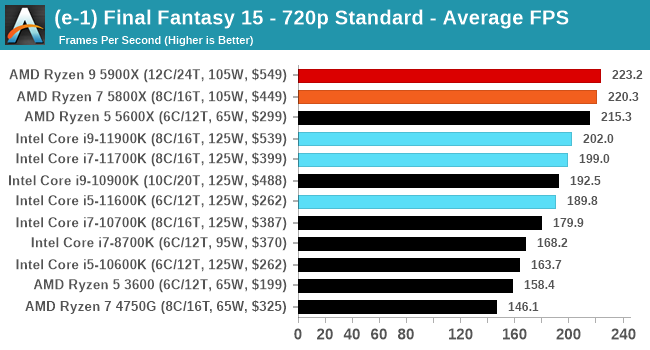 |
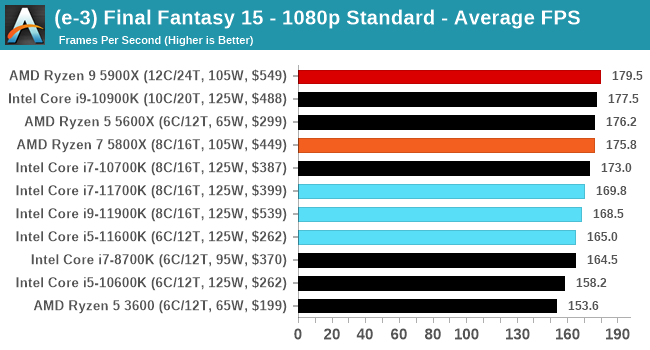 |
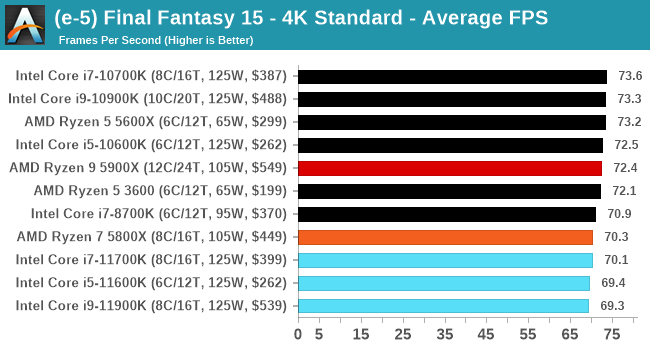 |
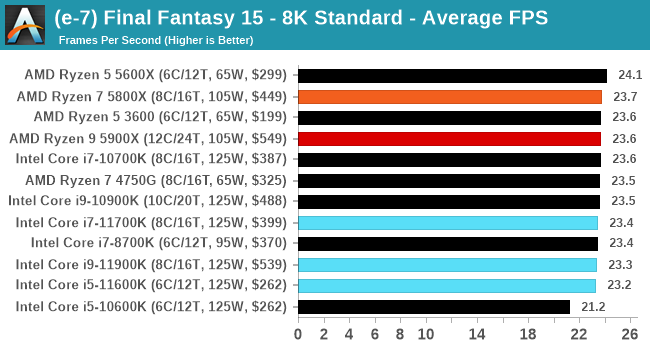 |
| 95th Percentile | 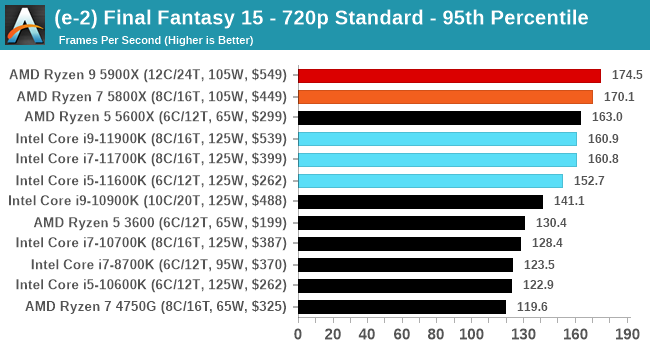 |
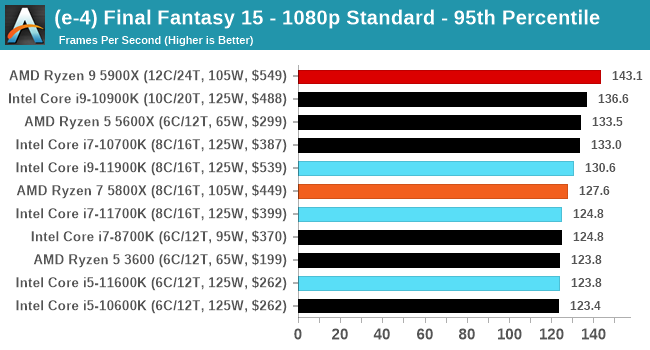 |
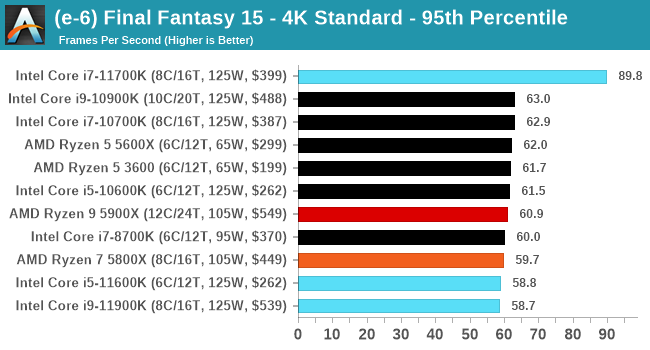 |
 |
All of our benchmark results can also be found in our benchmark engine, Bench.












279 Comments
View All Comments
mitox0815 - Tuesday, April 13, 2021 - link
"Just abandon"...those clocks you dream of might have been possible on certain CPUs, but definitely noton a broader line-up. The XPs ran hot enough as it was, screwing more out of them would've made no sense. THAT they tried with the 9590...and failed miserably. Not to mention people could OC the Northwoods too, beyond 3.6 or 3.7 Ghz in fact...negating that point entirely. As was said...Northwood, especially the FSB800 ones with HT were the top dogs until the A64 came around and showed them the door. Prescott was...ambitious, to put it nicely.mitox0815 - Tuesday, April 13, 2021 - link
*not onTheinsanegamerN - Wednesday, March 31, 2021 - link
Netburst was built for both high clock speeds and predictable workloads, such as video editing, where it did quite well. Obviously it royally sucked for unpredictable workloads like gaming, but you could see where intel was heading with the idea.Oxford Guy - Wednesday, March 31, 2021 - link
'you could see where intel was heading with the idea'Creating the phrase 'MHz myth' in the public consciousness.
GeoffreyA - Friday, April 2, 2021 - link
"MHz myth in the public consciousness"And it largely worked, even in the K8 era with the non-enthusiast public. Only when Core 2 Duo dropped to lower clocks was it accepted overnight that, yes, lower clocks are now all right because Intel says so.
Prosthetic Head - Tuesday, March 30, 2021 - link
Your point still stands, however P4 was also a VERY low bar for to measure IPC improvements relative to.Hifihedgehog - Tuesday, March 30, 2021 - link
Well, Bulldozer was too and look what AMD did with Ryzen...Oxford Guy - Saturday, April 3, 2021 - link
AMD had a long time. 2011 is stamped onto the spreader of Piledriver and that was only a small incremental change from Bulldozer, which is even older.Oxford Guy - Saturday, April 3, 2021 - link
And, Bulldozer had worse IPC than Phenom. So, AMD had basically tech eternity to improve on the IPC of what it was offering. It made Zen 1 seem a lot more revolutionary.GeoffreyA - Saturday, April 3, 2021 - link
"It made Zen 1 seem a lot more revolutionary"You're right; and if one compares against Haswell or Skylake, one will see that the Intel and AMD designs are crudely the same from a bird's-eye point of view, except for AMD's split-scheduler inherited from the Athlon. I think that goes to show there's pretty much only one way to make an efficient x86 CPU (notice departures are disastrous: Netburst/Bulldozer). Having said that, I'm glad AMD went through the BD era: taught them a great deal. Also forced them to start from scratch, which took their design further than revising K10 would have done.